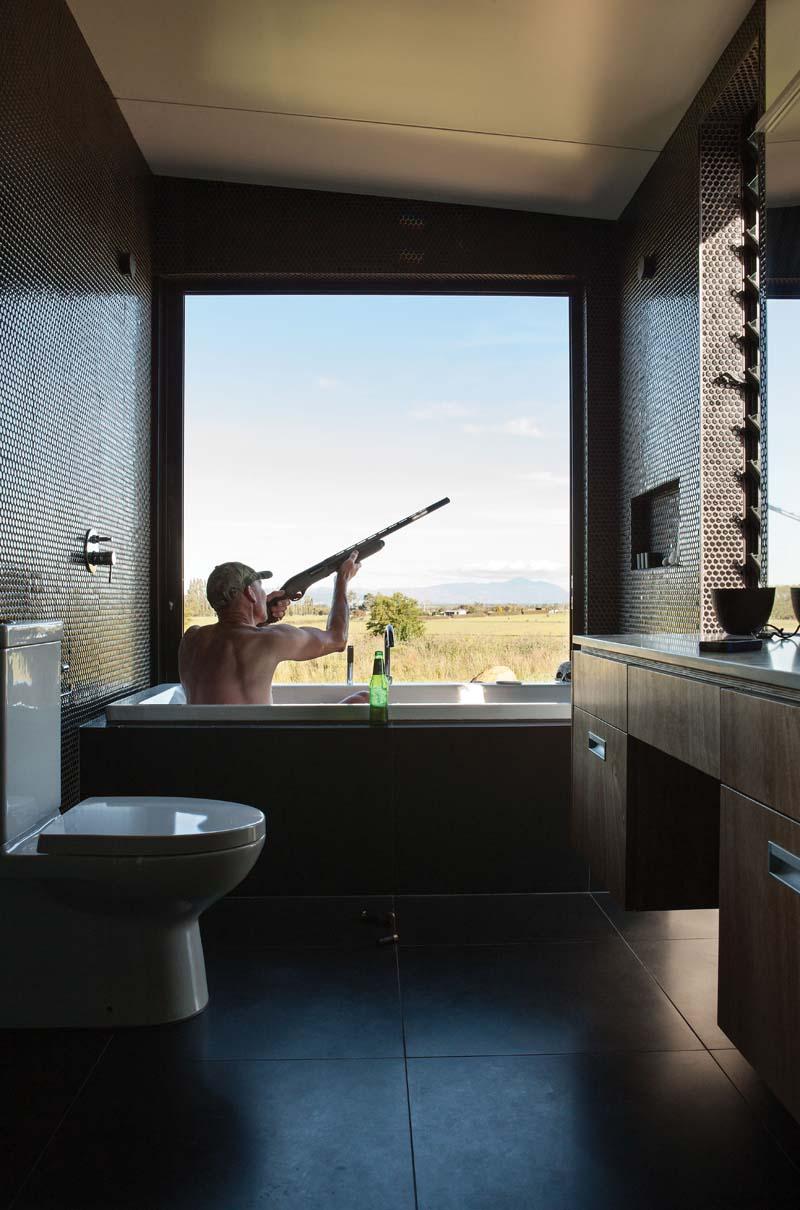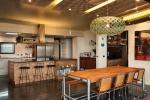Big Sky Farm

Employing Kiwi ingenuity is second nature to farmers so it’s no surprise that a Ngatea couple were willing to think outside the square when it came to the design and build of their new home.
Delwyn and Campbell Clayton-Greene wanted a striking design for the family home on their Hauraki Plains dairy farm but at an affordable cost.
They met both those criteria with the design input of architect Malcolm Taylor, of XSite Architects, and by using Metalcraft Insulated Panel Systems, ThermoSpan EPS panels for the house’s walls and roof.
Malcolm explains his brief and his design solutions: “The house had to be fun and relaxed for a family who love to cook and entertain. This is a very active family that has four generations that connect to the local community.
“The house needed to be affordable and we discussed how to achieve this. They were open to new construction techniques, and commercial detailing allowed the design to move outside NZBC acceptable solutions and with the use of insulated panels, the roof and walls become a key to meeting the budget. This allowed the construction program to be reduced through prefabrication.
“This also has allowed the house to remain simple in form, warm and quiet - with double the insulation required - and also allowed us to become bold with a dark exterior cladding that recedes into the landscape and has no thermal bridging issues.”
Delwyn says, “Rotary cow sheds are commonly built out of these panels because they go up quickly and they provide good insulation and sound proofing. We had just built a cow shed out of them so we were familiar with the material and it fitted with the vernacular of our home being on a dairy farm.”
Malcolm Taylor says using the panels was a “very affordable solution” at a building cost of about $2000/sq m because the panels are easy to put up and don’t require finishing externally or internally.
ThermoSpan EPS panels consist of a 0.59mm profiled roofing sheet bonded to a polystyrene core with a flat 0.59mm ceiling panel sheet bonded to the underside. The tongue and groove panels are slotted together easily and quickly, and sealed in place. The product is more commonly used in commercial and industrial applications.
The wall’s of the Clayton-Greene’s home are ‘Ebony’ coloured and in the Silkline profile, while the roof is ‘Titania’ in 5 Rib. The internal flat sheets on ceilings and walls, where visible, are in ‘Cloud’ to provide a neutral coloured backdrop.
Delwyn met Malcolm Taylor when he gave a presentation to her interior design class. She and Campbell called on him to design their new home using simple, robust materials.
“I like the modernist aesthetic so glass, concrete and steel was perfect,” she says. “And Malcolm did a great job of making it all work.”
Delwyn says the long, low and dark-coloured house hugs the land and is shielded from the wind and the road and any traffic noise by two mounds built up on its southern side.
Malcolm says, “The owners liked the idea of the ‘black stealth’, a building that sits low in the landscape and doesn’t say look at me. The two berms at the entrance to the house push the wind and the road noise up and over the house and you come in between these so that gives you a sense of protection and surprise as you arrive in the courtyard in front of the house.”
The mono pitched roofline rises from south to north with the ceiling soaring over the dark-stained strand board walls in the living spaces.
“We wanted to show the roofline right through the house so the walls don’t go up to the ceiling to show off that floating roof and that’s part of its charm,” says Malcolm. “And the strand board with its texture is quite a nice foil to the sleekness and coldness of the industrial materials.”
He adds that strandboard is a cost-effective material and using it in walls that don’t meet the ceiling – thereby eliminating the need for stopping - was a way of saving money as well as highlighting the roof.
It was the same sort of thinking that went into using the EPS panels, which cut labour costs.
“A third of the cost of building is labour so if you can half that, that’s a huge saving,” Malcolm says.
Inside, the home has an insulated polished concrete slab floor while acoustic panels have been placed overhead to cut down on noise. The panels also house downlights.
Double glazed aluminium joinery in addition to double the insulation required in the walls and ceilings creates a thermal envelope that means very little heating is needed.
“We have one heat pump for the whole house and there is a panel heater down the kids’ end of the house that we use when it gets really cold,” says Delwyn. “We get quite a lot of sun on the concrete floor during winter because Malcolm has designed the house for passive solar gain and that heat gets released at night.”
The house is laid out with a garage, laundry and mud room as an annexe at the rear of house, to one side of the forecourt.
Malcolm says the family did not want to waste space on hallways and corridors so the plan form lays out all the social spaces to the north and wraps the sleeping spaces at each end. The study to the east and the lounge to the west act as circulation spaces to serve the bedrooms.
The core of the home is open plan living that flows out to a north-facing, covered courtyard with open fire. A cedar feature wall extends out to provide shelter on the eastern side of the courtyard, while the fire is surrounded by CorTen steel for a rustic look.
Delwyn designed the kitchen, which was her “little pet project” as the family enjoy entertaining and she loves cooking. She placed the cooktop in the island bench so she could interact with guests while preparing food.
One of the unusual elements in the home is the bathtub in the bathroom that sits hard up against an external glass door that slides away to open the room up to the outside.
As Delwyn explains, “We are not spa people so we thought if we could have a bath that is kind of outside then that would be a great compromise.”
She says the home, which picked up two NZIA regional awards last year, is a tribute to Malcolm Taylor’s design and detailing, making something spectacular from humble materials.
“Most people don’t realise what the house is made of and get quite a surprise when we tell them.”

